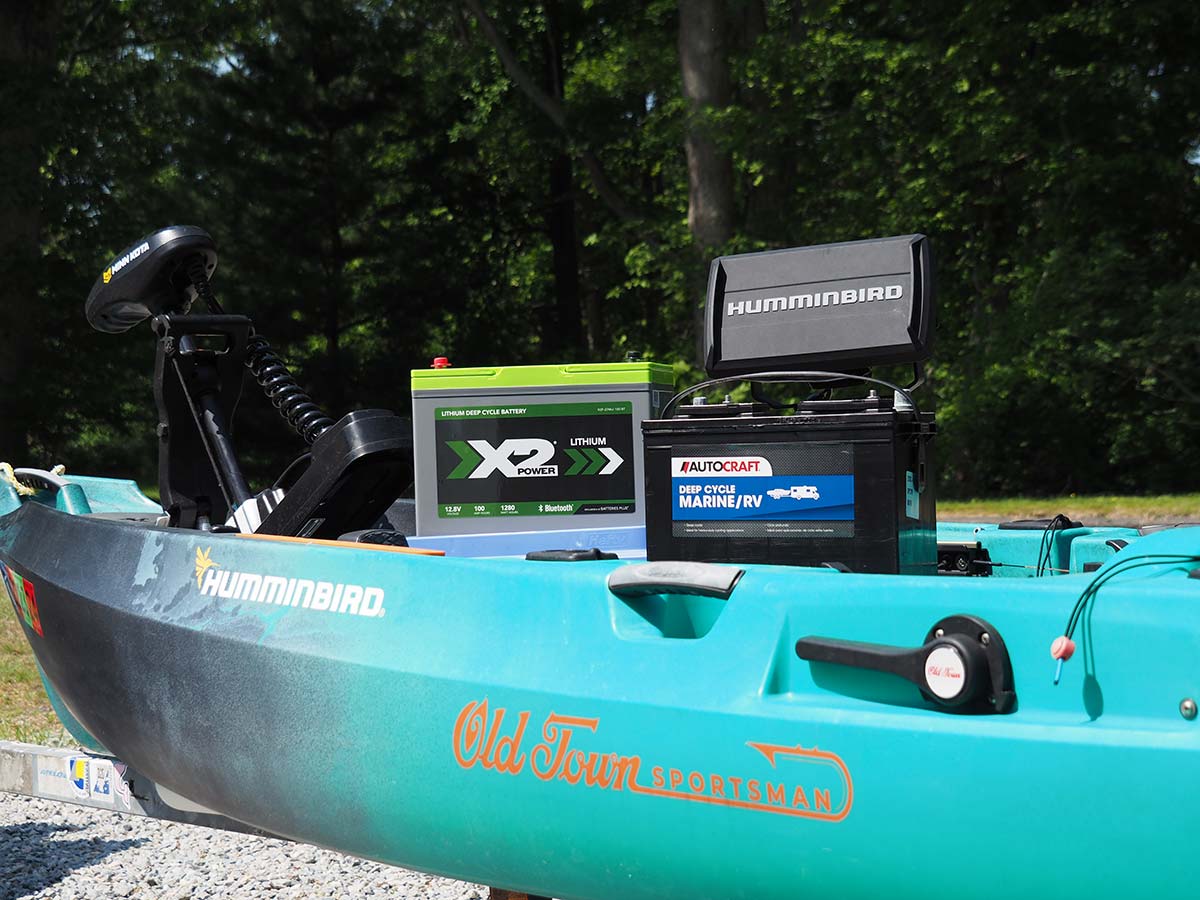
If you haven’t already upgraded your kayak or boat’s battery system to lithium-ion, what are you waiting for?
Lithium batteries have been around for quite a few years, and enough time has elapsed since they first hit the market where technological advancements and a competitive marketplace have both brought the price down to a reasonable level as well as vastly improved reliability and performance. There are a ton of technical and chemical aspects to the lithium battery benefit over alternatives such as lead acid, absorbed glass mat and gel cell, but as I am a fisherman way before a chemist, I’ll leave that side of the story to someone far more knowledgeable on the subject than I. But what I can address is why, if you haven’t done so yet, you should upgrade to lithium power on your kayak, and most if not all the benefits I’ll address can seamlessly apply to the boating masses as well.
Money Talks
I’m jumping into the cost first as it is the number one reason why the upgrade is not made by most anglers. There is no overlooking the up-front price difference as it’s indisputable. For example, where my original kayak’s lead-acid battery cost roughly $145 out the door, the X2Power that I recently upgraded to retails for $899. However, it’s when you look at the long-term that the savings become apparent.
A heavily used lead acid battery retains peak performance for roughly two years before a noticeable drop in power and runtime is seen to the point where it should be replaced. While this might not be an issue if you’re only powering a small screen fishfinder on a kayak, when using your batter for your primary source of power by way of a trolling motor, this can have catastrophic consequences. Also, if you are running multiple, large screens and 360, forward-facing and live imaging, the draw on the battery is even greater and they simply do not function at 100% without clean, steady voltage – something you’re not getting with lead. Further, if you regularly run that lead acid down below 50% of its capacity, the damage to the cells speeds up thereby reducing its life even further.
So, what I am getting at here is that you’re going to have to replace that lead battery many, many times over the lifespan of a single lithium battery so once you add up the total lifetime of your investment, lithium costs much, much less.
Weight Loss
If there is one consideration to be made, which is pretty much straight-forward and undeniable, it involves the drastic weight savings to be had when choosing a lithium-ion battery over lead acid. Lead acid batteries are, simply put, heavy! By swapping out lead for lithium, you cut roughly 50% of the weight without a sacrifice to output. For example, where my original lead acid battery I used to power the Minn Kota on my Old Town Auto Pilot 136 weighed more than 50 pounds, the X2 Power I am now running weighs a mere 28.5 pounds! This is most noticeable when loading and unloading the yak before and after each trip, but it also pays dividends on the water as less weight requires less power to propel resulting in more speed and longer time spent fishing. Where I used to groan as I strained to move the lead beast from garage, to truck, to yak; I now freely toss the lithium around with one hand.
The lone argument that I can see being made against the weight savings being a good thing is in the changing of the center of gravity on the craft, potentially making it less stable albeit only minutely so. I have not noticed this on my kayak as it sits pretty heavy when fully outfitted for a day of fishing, but in a lighter yak it might be noticeable.

Battery Status
One thing that always worries me while fishing from my kayak is reserve power for my Minn Kota. The last thing I want to have to do at the end of a long day blackfishing, constating running Spot Lock, is to paddle my way back to the ramp. While I get it that kayaks were originally designed to be paddled, as we add more and more gear, accessories, and supplies to our kayaks, they simply become more burdensome to paddle. As my wife always reminds me, I could just pack less gear, but what fun is that?
There are plenty of options to monitor your battery’s status, and some are better than others, but for me there is no better vessel than my phone – yes, there’s an app for that! I already have apps for charts, tides, weather and even monitoring my fishfinder, so why not add the battery to the list? X2Power Batteries come standard with Bluetooth integration so by downloading the free app, at a moment’s notice I can check the battery’s voltage, current, power, cycles, reserve power and more. Other lithium batteries have similar functions, but that is not an option for the lead models, so you’re required to rely on some sort of after-market gauge that is not going to be quite as reliable and displays far fewer features.
At the end of the day, assuming you can manage the up-front investment, there is little reason not to take full advantage of all the benefits of a lithium power source as you convert the basic kayak platform into a fully customized fishing machine.




